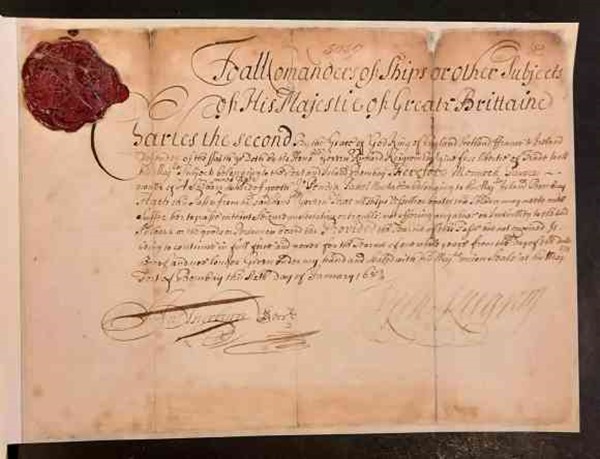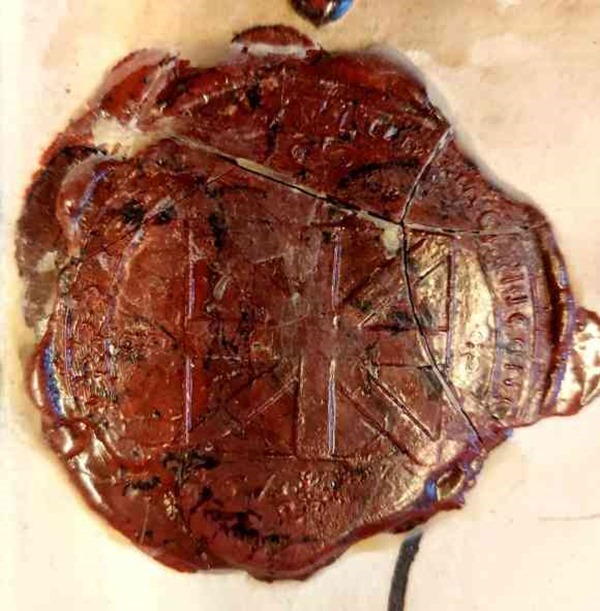How an early version of UK’s national flag helped Bombay merchants grow their business
A pass for ‘Monnock Parsee’ and ‘Pendia Pattell’ sailing aboard the Tiger was issued at Fort Bombay carries an impression of the ‘Union Seale’.
Would it surprise you that there is an early representation of UK’s Union Flag on a pass issued in Bombay in 1684?
Bombay, now known as Mumbai, became an English colony on May 11, 1661, as part of the dowry of Catherine of Braganza when she married Charles II. On March 27, 1668, the King leased Bombay to the East India Company for an annual rent of 10 pounds. By 1683 dissatisfaction with the Company’s rule culminated in a rebellion, with Bombay’s inhabitants appointing Captain Richard Keigwin to govern on behalf of Charles II. Keigwin issued passes to local merchants allowing them to trade outside the Company’s monopoly as part of his policy to encourage economic growth in Bombay.
Pass issued by Richard Keigwin for the ship Tiger, owned by ‘Monnock Parsee’ Bombay, with impression of ‘His Majestie’s Union Seale’ Credit: British Library IOR/E/3/43 f. 323 (Public Domain)
A pass for “Monnock Parsee” and “Pendia Pattell” sailing aboard the Tiger was issued at Fort Bombay on January 6, 1684. Valid for one year, it was signed by Governor Keigwin on behalf of Charles II. It requested ship commanders and British subjects allow the Tiger and its passengers “to passe without seizure, molestation or trouble, nor offering any abuse or incivility”. The pass carries an impression of His Majesty’s “Union Seale” in addition to the signatures of Keigwin and his secretary.
Impression of ‘His Majestie’s Union Seale’. Credit: British Library IOR/E/3/43 f. 323 (Public Domain)
The seal’s design includes a large flag comprising the saltire of St Andrew and cross of St George denoting the union of England and Scotland. Informally combined from March 24, 1603, onwards after the accession of King James VI of Scotland to the English throne as James I, this was not a legal and political reality until the 1707 Act of Union. Nevertheless, a Royal decree on April 12, 1606, ordered the creation of a Union Flag for display on the main topmast of English and Scottish vessels. Various design iterations fell in and out of fashion throughout the 17th century. With flags being termed “jacks” in the maritime world, such Union Flags acquired the nickname “Union Jack”. Becoming the national flag of the United Kingdom from 1707 onwards, our current design has been in use since 1801.
This article first appeared on the British Library’s Untold Lives Blog.


